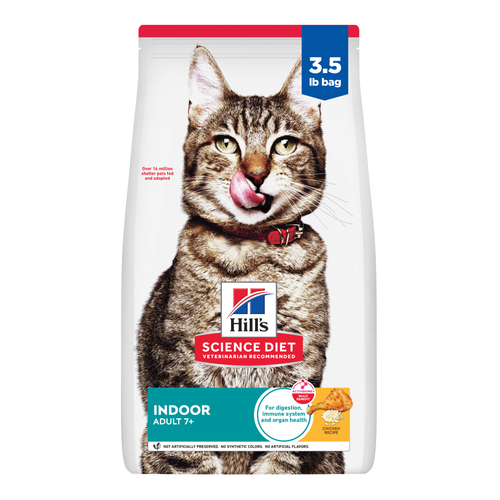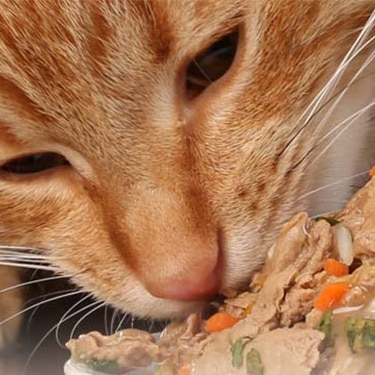
-
Find the right food for your petTake this quiz to see which food may be the best for your furry friend.Find the right food for your petTake this quiz to see which food may be the best for your furry friend.Featured products
 Hill's Science Diet Adult Chicken & Beef Entrée Dog Food
Hill's Science Diet Adult Chicken & Beef Entrée Dog FoodChicken & Beef Entrée in a delicious loaf with complete & balanced nutrition to help keep adult dogs active and healthy
Shop Now Adult Chicken & Barley Recipe Dog Food
Adult Chicken & Barley Recipe Dog FoodSupports lean muscle and beautiful coat for adult dogs
Shop Now Adult Large Breed Chicken & Barley Recipe Dog Food
Adult Large Breed Chicken & Barley Recipe Dog FoodSupports healthy joints, lean muscle, and beautiful coat for large breed dogs
Shop NowFeatured products Adult 7+ Indoor Chicken Recipe Cat Food
Adult 7+ Indoor Chicken Recipe Cat FoodSupports energy level and beautiful fur in mature indoor cats
Shop Now Adult Turkey & Liver Entrée Cat Food
Adult Turkey & Liver Entrée Cat FoodPrecisely balanced nutrition with the delicious taste of minced turkey & liver to help fuel the energy needs of cats during the prime of their life
Shop Now Senior Vitality Adult 7+ Tuna & Vegetables Stew
Senior Vitality Adult 7+ Tuna & Vegetables StewImproves Everyday Ability to Get Up & Go
Shop Now -
Dog
- Dog Tips & Articles
-
Health Category
- Weight
- Food & Environmental Sensitivities
- Urinary
- Digestive
- Joint
- Kidney
-
Life Stage
- Puppy Nutrition
- Adult Nutrition
- Senior Nutrition
Cat- Cat Tips & Articles
-
Health Category
- Weight
- Skin & Food Sensitivities
- Urinary
- Digestive
- Kidney
-
Life Stage
- Kitten Nutrition
- Adult Nutrition
Featured articles How to Properly Mix Wet & Dry Pet Foods
How to Properly Mix Wet & Dry Pet FoodsAn Orange cat eating from a bowl filled with mixed food
Read More What Is Littermate Syndrome? Pet Adoption Guide
What Is Littermate Syndrome? Pet Adoption GuideLearn more about littermate syndrome in dogs and cats and how to successfully navigate adoption and early socialization processes.
Read More The Science Behind Our Love for Pets
The Science Behind Our Love for PetsLearn the scientific reasons why we have such strong connections with our pets, and what science says about the love between humans and our furry friends.
Read More -


Most cat parents agree that they adore their feline friends because of the weird things they do. The unpredictability of funny cat behavior (Why do cats love boxes? And why do they zoom around at 3 a.m.?) livens up any household. But what you see as silly and entertaining is just your cat following their instincts.
Here are six weird things cats do and the science behind them.

1. Kneading
One of the most common and distinctive catlike displays of affection is kneading. You climb into bed or curl up in your favorite chair, and they show up to massage you and the blankets. Nursing kittens knead to stimulate their mother's milk flow. Cats may also use the behavior to scent-mark a beloved human, create a comfy bed or express contentment. It's a trait kittens carry into adulthood, notes the American Animal Hospital Association, often used to calm themselves during times of anxiety. In the cat world, kneading equals love and safety.
2. Presenting Their Tail
A cat showing their bottom to you feels like one of the least charming weird things cats do. This often happens when they leap into your lap for attention, pacing back and forth as you pet them. Instead of a face-to-face interaction, your kitty turns around and sticks their nether regions in your face. Gross!
Well, not to the cat. Scent rules the feline world: Cats identify each other by smell. Presenting the tail end first shows you your cat trusts you. That high-held tail position offers a friendly greeting. Does your pet consider you a fellow cat? No, but they're communicating the way they would to other cats, Discovery explains. Consider it a friendly invitation for a "howdy" sniff. (You don't have to accept the invitation, of course.)

3. Countertop Cruising
Cats love lounging on countertops, shelves and other second-story territories. The higher the perch, the better. That poses a hygiene and safety issue for cats who stroll across the stovetop. But you can't stop this natural inclination.
Pet cats, though no longer wild, inherit the instinct to seek high ground, notes Feline Behavior Solutions. They're hunters, sniffing out and stalking that tasty butter dish but also prey. Finding the highest ground in your house offers a nifty lookout, far from dog-sniffing and kid-poking range. Plus, it has the added perks of food rewards. To redirect your cat's natural urge, put away tasty temptations, make counters unattractive and give your climbing kitty a cat tree or other perch higher than the counters.
4. Staring at Nothing
Cats tune in to their environment. They hear and see things people can't, like that dust bunny floating through the air 30 feet away. It may freak you out to see your kitty sitting in a corner staring at something invisible, but rest assured, those feline eyes are trained on something important.
According to Cats Protection, cats hear things in the ultrasonic range that humans can't. They also have an eight-octave hearing range, hearing higher and lower than many other mammals. We can't know if they watch ghosts move across the room. But, more likely, your cat tracks the sound of insects behind the walls or mice in the ceiling.
Your cat also sees things differently than you, explains Live Science. Humans see light in a spectrum of colors from red to violet. But some animals (including cats) see the ultraviolet spectrum invisible to us, notes Live Science. Rodents use this ability to see and follow urine trails. We don't know what cats see, but when they act as though something enthralls them, it might just be invisible.


Tasty Tips
5. Zoomies: Running Around the House
Zoomies could be the weirdest of the weird things cats do, and they do it a lot. One moment, they're sitting there, quiet and unassuming. Then, they dart across the room at top speed to chase ... nothing. Zoomies (properly known as Frenetic Random Activity Periods or FRAPS) can startle us, especially in the middle of the night. This normal cat behavior has several potential causes.
In most cases, zoomies express pent-up energy or counteract kitty boredom. Kittens and young adult cats indulge more often. Even older felines can burn up the house from time to time. According to Pet Health Network, other cats zoom after using the litter box because they feel so good after emptying, or they zoom when they experience discomfort eliminating.

6. Hiding in Boxes and Small Spaces
Have you ever wondered, "Why do cats love boxes?" Is there anything cuter than seeing an adorable face sticking out of a paper bag? Or finding your cat curled up in a tiny cardboard box that's three times too small? Cats love seeking small hiding places. Although this behavior is endearing, it also makes cats feel safer. They seek comfort, security and warmth in spots that seem so odd to you, like a shoebox or the bathroom sink.
As predators, cats instinctively find hiding places from which to stalk prey. But as prey themselves, they also appreciate defensive hiding spots to stay safe. More than that, the swaddling effect that comforts human babies also benefits cats. They can create this hugging benefit by squeezing into boxes to calm their stress, explains Live Science.
These are only a few of the weird things cats do to bring love, fun and comfort into your world!


Amy Shojai, is a certified animal behavior consultant, and nationally known authority on pet care and behavior. She began her career as a veterinary technician and is the award-winning author of more than 35 prescriptive nonfiction pet books
Related products

Delectable chunks with tender chicken smothered in a rich gravy

Precisely balanced nutrition with the delicious taste of minced turkey & liver to help fuel the energy needs of cats during the prime of their life

Supports energy level and beautiful fur in mature indoor cats

Improves Everyday Ability to Get Up & Go
Related articles

When you adopt a cat, you don't just gain a best friend; you also save her life. Here's why getting a cat from a local animal shelter makes so much sense.

Discover which cat toys games your feline friend might like, and how they are great sources of exercise. Explore our library of articles to learn more.

Discover how to train your cat, starting with very basic first steps that both reward good behavior and discourage the bad.

Learn how to litter train a kitten with this guide to potty training, including when to start litter training kittens and troubleshooting tips.

Put your cat on a diet without them knowing
Our low calorie formula helps you control your cat's weight. It's packed with high-quality protein for building lean muscles, and made with purposeful ingredients for a flavorful, nutritious meal. Clinically proven antioxidants, Vitamin C+E, help promote a healthy immune system.
Put your cat on a diet without them knowing
Our low calorie formula helps you control your cat's weight. It's packed with high-quality protein for building lean muscles, and made with purposeful ingredients for a flavorful, nutritious meal. Clinically proven antioxidants, Vitamin C+E, help promote a healthy immune system.

